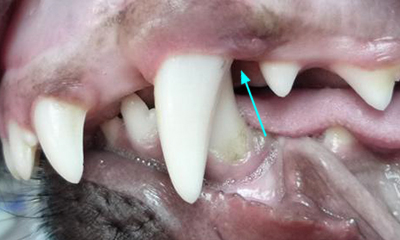class ii malocclusion dog
An underbite occurs when the mandibular lower jaw teeth protrude forward relative to the maxillary upper jaw teeth. Mandibular distoclusion Class 2 malocclusion.

Malocclusions In Dogs And Cats Centennial Animal Hospital
Extraction of the offending was resolved the traumatic occlusion.

. Many breeds including mixed breed dogs and cats. Though any dog or cat may suffer from dental malocclusion this is considered a very common disorder in the world of purebred dogs. This often results in mandibular canine teeth traumatizing the palate.
Mandibular distocclusion has been diagnosed in. Malocclusion means misalignment. Class II malocclusion.
Class 2 malocclusion. Interceptive orthodontic treatment may be elected to temporarily resolve painful contact points with the primary dentition. Correcting this skeletal relationship prior to braces can dramatically shorten the amount of time that braces are worn.
This often results in mandibular canine teeth traumatizing the palate. Orthodontia the movement of teeth is not performed on show dogs or dogs that are intended for breeding. Orthodontia the movement of teeth is not performed on show dogs or dogs that are intended for breeding.
Some of the various treatment options include extraction of the offending tooth or teeth removing the crown of a tooth and performing. Terms that have commonly been associated with class II. In this type of malocclusion the mandible and the maxilla are of equal lengths but one or more teeth are misaligned.
A Class II malocclusion is classified as the lower jaw mandible being too short in comparison with the upper jaw maxilla. The mandible resides distal caudal to its normal location in relation to the maxilla Photo 5. Class III malocclusions are considered underbites in dogs and cats.
Our goal in these cases is to give our patients a comfortable and functional bite. Advanced Continuing Education Courses Online for Veterinarians and Vet Technicians. The usual treatment options in growing patients.
Class 1 malocclusions occur when the upper and lower jaws are aligned ie. Class II malocclusions are considered overbites in dogs and cats. Class II Malocclusion.
The patient was diagnosed with benign hypermobile EDS towards the end of treatment. Note the wide gap between the upper and lower incisors and how the lower canines are now trapped to the palatal side of the upper canines. Class II Before After Treatment.
Class II problems represent abnormal bite relationships in which the upper jaw and its teeth are located in front of the lower jaw. When the mouth is closed the teeth of the lower jaw do not occlude align normally with their corresponding teeth in the upper jaw. No underbite or overbite but the teeth dont come together properly because of crowding misalignment or rotation.
The American Veterinary Dental College defines Class II malocclusion as mandibular distocclusion when there is an abnormal rostro-caudal relationship between the dental arches in which the mandibular arch occludes caudal to its normal position relative to the maxillary arch Figure 3. Mandibular distoclusion or Class 2 Malocclusion MAL2. Class II malocclusions are considered overbites in dogs and cats.
In dental malocclusion one or more teeth are in abnormal position within the dental arch. Class 2 malocclusions are also known as an overbite. The mandible resides distal caudal to its normal location in relation to the maxilla Photo 5.
Class II malocclusion The American Veterinary Dental College defines Class II malocclusion as mandibular distocclusion when there is an abnormal rostro-caudal. Treatment options vary for each type of malocclusion. Estimated Reading Time.
This relationship is usually due to inherited characteristics. Malocclusion is the termed used for an abnormal bite. This Scottish Terrier dog had a severe Class III malocclusion resulting in canine trauma from the maxillary intermediate incisors and lingual floor trauma from the maxillary central incisors.
Class 3 malocclusions are also known as an underbite. The aim of this case report is to present the treatment plan progress and retention difficulty of an adolescent with a skeletal Class II malocclusion and ectopic canine eruption using a Pendulum appliance and skeletal anchorage. This often results in mandibular canine teeth traumatizing the palate.
The mandibles are longer in respect to their normal relationship to the maxilla. Class 2 or class II malocclusions are characterized by upper molars that are too far forward compared to the lower molars. This happens when the maxilla is longer than the mandible.
Causes of malocclusion Malocclusion in dogs is usually hereditary which means the condition is passed down to future generations. The mandibles are too short compared to the maxilla as in Figure 4. Maxillary Canine Tooth Extraction for Class 2 Malocclusion in a Dog.
Also known as an overbite overjet overshot and mandibular brachygnathism it occurs when the lower jaw is shorter relative to the length of the he upper jaw. This is a serious skeletal deformity and would be considered a skeletal malocclusion. Malocclusion in dogs is commonly diagnosed in puppies when the primary dentition is present.
A Class II malocclusion is classified as the lower jaw mandible being too short in comparison with the upper jaw maxilla. Anecdotally this traumatic malocclusion is overrepresented in the following. However the adult dentition must be monitored closely and treated to achieve a lif.
Our goal in these cases is to give our patients a comfortable and functional bite. This overbite can be caused by an overly prominent upper jaw or an underdeveloped lower jaw. The mandible is short with respect to its normal position with the maxilla.
This is a type II malocclusion in a dog- the lower jaw is shorter than the upper jaw by about 1 inch. Types of class 2 malocclusion Class 2 malocclusions can be subdivided into two categories division 1 and division 2.

That Bites Dental Malocclusions And Abnormal Bites In Pets Vet In Aurora The Animal Dental Clinic
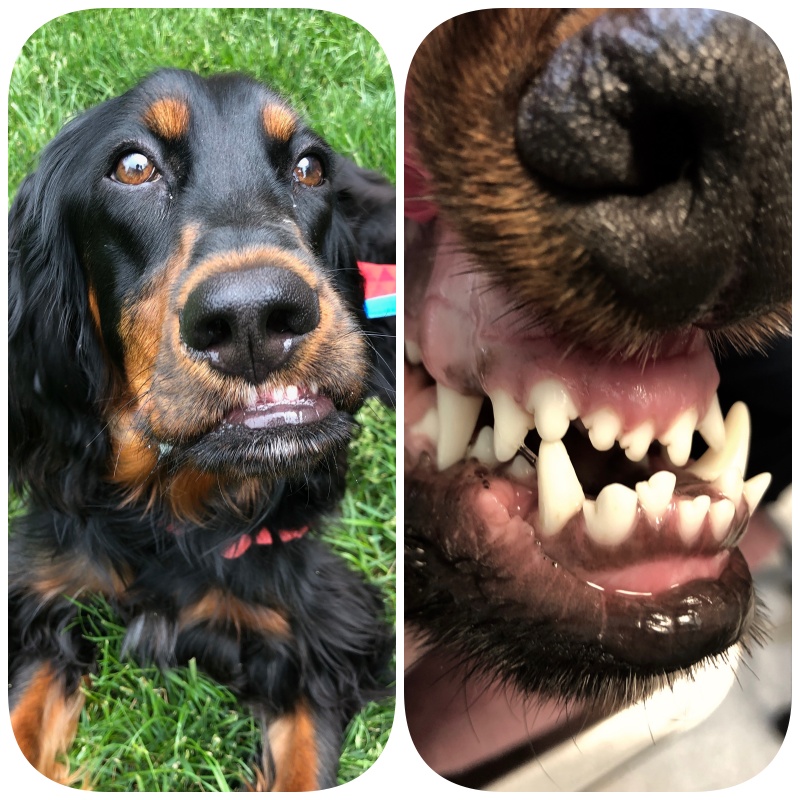
Malocclusions Misaligned Teeth Animal Dental Specialist

Maxillary Canine Tooth Extraction For Class 2 Malocclusion In A Dog Semantic Scholar
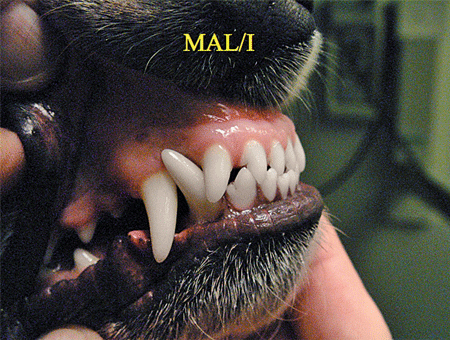
Defining Dental Malocclusions In Dogs
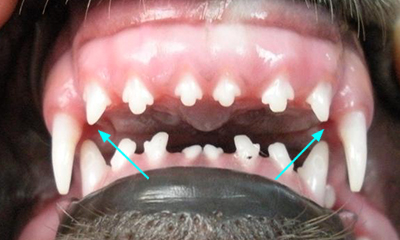
Overbite Veterinary Dental Center Malocclusion In Pet

Canine Classification A Class I Canine With The Maxillary Canine Download Scientific Diagram

Read This Dentistry Article By Katie Rankin Bs Rvt
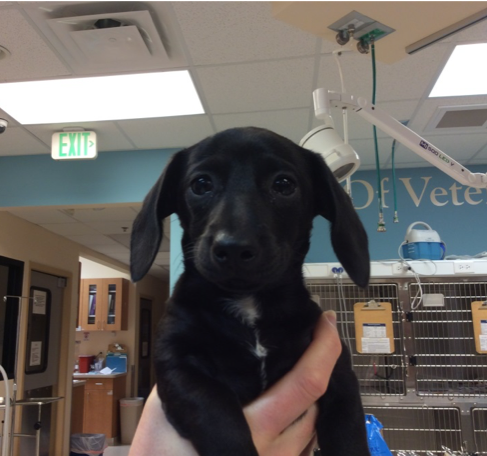
Class Ii Malocclusions When The Lower Jaw Is Shorter Than The Upper Jaw The Cove

Malocclusion In Dogs And Cats The Veterinary Nurse

Treatment Of Class Ii Malocclusion With Tooth Movement Through The Maxillary Sinus American Journal Of Orthodontics And Dentofacial Orthopedics

Class Ii Malocclusion In A Bichon Severe Overbite Flickr

Puppy Teeth Problems The Ultimate Guide Sydney Pet Dentistry

Malocclusion In Dogs And Cats The Veterinary Nurse

Malocclusions In Dogs And Cats Centennial Animal Hospital
Helping Your Puppy With Teeth Misalignment Malocclusions

Feature Oral Health Issues In The Dog Developmental Abnormalities Malocclusions By David E Hansen Dvm Favd Davdc
